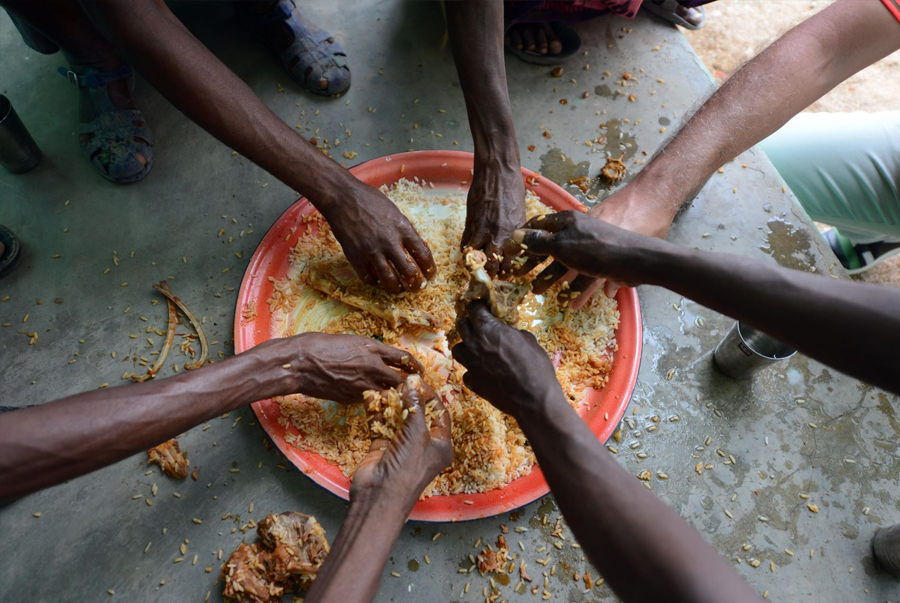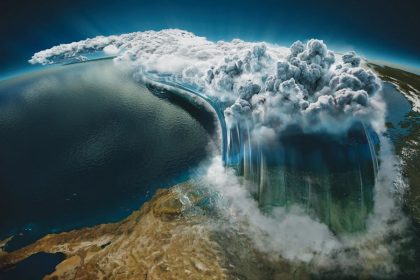Hi readers! Are you ready for some more options for food security?
Yes? WOW lets first talk about DESERTEC
How it would sound to you that:
in just six hours, the world’s deserts receive more energy from the sun than the humankind consumes in a year?
Strange! Isn’t it?
This is not mine but Dr. Gerhard research
Just to apprise you briefly,
DESERTEC was developed by the Trans-Mediterranean Renewable Energy Corporation (TREC): a voluntary organization founded in 2003 by Club of Rome and National Energy Research Center (NERC) Jordan. From this network, DESERTEC Foundation emerged as a non-profit organization tasked with promoting the DESERTEC solution around the world.
German particle physicist (Dr. Gerhard) and founder of TREC conceptualized DESERTEC in 1986 during a search for alternative source of clean energy after the Chernobyl nuclear accident. His search concluded what I mentioned above.
The main idea behind DESERTEC is promotion and production of renewable energy in deserts. Sahara Desert was chosen as an ideal location for solar farms for its exposure to sunshine between 80% and 97% of the daylight hours.
This is the sunniest, round the year area on the planet earth.
Studies done by the German Aerospace Center (DLR) demonstrated that the desert sun could meet
- rising power demand in the MENA (Middle East and North Africa) region and Europe,
- reduce carbon emissions across the EU-MENA region,
- power desalination plants to provide freshwater to the MENA region,
- MENA region would be able to meet its needs for power with renewable energy, while exporting its excess power to create an export industry with an annual volume of more than €60 billion
- by importing desert power, Europe could save around €30/MWh, and
- by considering land and water use, DESERTEC intends to offer an integrated and comprehensive solution to water and food shortages
That’s the area where we are interested in dear readers
The question is if technology can be used to green coastal deserts
Like of Chile, California, Peru, and the Middle East using salt water?
The answer is
Yes: Seawater greenhouse (SWGH) is the appropriate technology The “desertec” concept demonstrated a way to provide climate protection, energy security, and development by generating sustainable power from sites (like Sahara Desert) where renewable resources are abundantly available.



In the natural water cycle, seawater is heated by the sun, evaporates, cools to form clouds, and returns to earth as rain. Similarly, in SWGH, hot, dry, and dusty desert breeze enter into a Greenhouse, (Please see details in the picture) where plants are growing. The breeze then
strikes with pipes filled with superficial seawater where it gets cooled, and then humidified by seawater. This humid air nourishes crops growing inside the green house and then passes through an evaporator. When it meets a series of tubes containing cool deep seawater,
fresh water condenses and is then collected (Air conditioners are based on this techniques). Because greenhouses produce more than five times the fresh water needed to water the plants hence some of it can be released into the local environment to grow other plants:
For example, look at this picture, it is the exterior of a SWGH when it was established. Extra fresh water condensed inside the green was collected and thrown outside the greenhouse where nothing was growing initially. After 2 years enormously growing plants can be seen outside the green house on the desert land (seeing is believing).
- Seawater greenhouses have been initiated in a large-scale pilot project backed by the Norwegian government near Aqaba in Jordan in 2018 just: a kilometer away from Israeli border,
- First farm to grow vegetables in a desert using only sun and seawater has been running since 2016 in south Australian desert,
- The Sahara Forest Project: a combination of different technologies to grow food and bio-fuel crops is running since 2015.
As we know that, 90% of the world’s population lives within 3000 km of deserts which means it is applicable across the world. Concentrating solar-thermal power plants (CSP) are the key to harnessing desert sun: they use heat from the sun to drive steam turbines and generate electricity. This heat can also be stored in heat tanks which means that electricity is available on demand.
The technology is proven and has been in use for years, but this is just one of the many technologies being developed by those who can afford to enable food to be grown in unlikely places which can even be provided to others:
- One of the simplest, but most ambitious plans, may be the long-mooted Great Green Wall (the name of three tree-planting initiatives i.e., Great Green Wall, China., Great Green Wall, India., and Great Green Wall, Africa’s Sahel region at the southern edge of the Sahara Desert: one of the poorest places on the planet. This linear forest is 15km wide and 7,775km long, and stretch from Senegal in the west to Djibouti in east Africa. Sahel is on the frontline of climate change and millions of locals are already facing its devastating impact. The modern green wall has evolved into a program promoting water harvesting techniques, greenery protection and improving Indigenous land use techniques. It would save
- 11 countries through which it would pass,
- will help stop southward spread of the Sahara,
- slow soil erosion and wind speeds,
- help rainwater filter into the ground and
- create micro-climates (just like outside SWGH) to allow fruit, vegetables, and other crops to be grown:
What else is food security?
Now let’s talk about some hardcore scientific options.
Charlie Paton, a British inventor,
Used state of the art technology to tailor-made the crop plants: CRISPR/CAS9 CRISPR (Clustered Regularly Interspaced Short Palindromic Repeats (difficult to absorbed by you dear reader but I will make it simple): is a family of DNA sequences found within the genomes of prokaryotic organisms such as bacteria.
These sequences are derived from DNA fragments of viruses that have previously infected the bacteria and can be used to
detect and destroy DNA from similar viruses during subsequent infections through the use of
Cas9 (CRISPR associated PROTEIN): a protein which plays a vital role
in the immunological defense of certain bacteria against DNA viruses. Its
main function is to cut DNA thus, it can alter a cell’s genome: the process thus called as “Genome editing” (Pl. see figure).

Principal of genome editing is:
to cut the double stranded DNA at a target position
The CRISPR RNA (crRNA) with a sequence similar to the target and
trans-activating CRISPR-RNA (tracr-RNA) brings CAS9 nuclease to
the target site.
This artificial linkage of crRNA and tracr-RNA into one RNA Chain
(single guide RNA: sgRNA) has no effect on the function of a gene because, once CAS9-sgRNA complex cleaves the target gene, it is easy to disrupt the gene function by deletion or insertion mutation.
To make it simpler, let’s consider the disrupted gene as a disease spreading gene in the plants (pl. see figure). Once CAS9-sgRNA complex cleaves/disrupt this disease spreading gene it will no more be a disease spreading gene and the plant will be disease free.
This simple method is now rapidly spreading as a practical genome editing technique
China is on the top of world in using this technology followed by Korea, the Philippines, Israel, Saudi Arabia, India and other countries comprising USA, Europe. Japan and Turkey (Pl. see figure).

Are we using the technology adequately?
Only CEMB, NIBGE, and NIGAB claimed that they are using the technology with product not yet out. Do we believe only in optics?
So dear reader you can guess the gravity of situation.
By the way,
CRISPR/CAS9 mediated genome editing technology is a safe alternative to hard core genetic engineering to which most of the world reacts negatively
That’s all for now
See you next week with one more episode on food security and I sincerely promise
that it would be is in a layman language
Take care, Bye.





